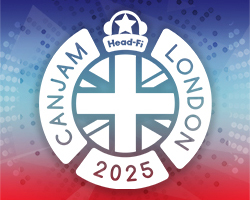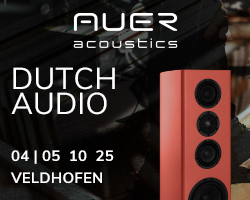Custom HiFi Cables Ltd. (CHC for short in this review) was established in 2010 in the fine old English city of Leeds. It produces a wide range of hi-fi and home cinema accessories, including cables, power supplies and mains conditioners. Recently they have ventured into the area of dedicated headphone amplifiers and their 2 models are the subject of this review, along with two DC power supplies .
Design Features
The HA10 (£234.99) headphone amplifier is based on a hybrid design, using a high quality E88CC dual triode valve for the first stage of amplification and then a pair of audiophile-grade MOSFETS for the second stage of amplification, which work in a class A configuration.
For the higher spec HA10SE (£269.99), improvements include an ALPS Blue volume pot, audiophile grade resistors in the signal path, and for the input audio signal capacitors high-end film input caps from Solen.
The DC1 (£139.99) and DC2 (£249.99) PSUs are both linear, not switched mode designs. For the DC2, improvements include a larger toroidal transformer (more than twice the power rating of the one in the DC1), larger reservoir capacitors (almost twice the capacity of the DC1), and mains surge and filtering. The DC2 is about twice the size and weight of the DC1.
For both the DC1 and DC2, you can choose the colour of the power LED! Blue, Green or Orange-Red are standard, or others can be supplied to special order. That’s a nice touch, I think.
Practicalities
All 4 units under review are nicely made with good fit & finish, and are available in silver or black..
Unusually, and initially a bit confusingly, the Right and Left RCA inputs are the opposite way around to usual, with the R input being on the left when viewed from the front.
Some hum issues were found when setting the amps up, but these were sorted with a bit of fiddling. I suspect the amps are more sensitive to grounding issues than some components.
CHC probably intends the HA10 to be matched with the DC1 PSU, and the HA10SE amp to be paired with the DC2 PSU. This is the way I did most of the listening, but I did mix & match a little to check out the performance contribution of the PSUs themselves.
When used with either the DC1 or DC2 PSU, the power switch on the HA10 and HA10SE must be turned on (up) before the DC1 or DC2 is powered up – otherwise the PSU will start up in ‘safe mode’ and not power the amp.
On power-on, there are some quite loud pops and thumps, so CHC advise that headphones only be connected after 15 seconds or more.
The Sound
A quite broad range of sonic presentations are available from the several combinations of amp and PSU.
Without doubt, the HA10SE / DC2 is noticeably more open, detailed and transparent than the HA10 / DC1, with a very lively and upfront presentation and a wider dynamic range with faster transients. In fact, I found the SE to be a bit challenging on occasion, with some treble forwardness being present and more of an upfront character than I am comfortable with for longer listening sessions. I often preferred the rather more laidback and easy-on-the-ear sound of the basic HA10 / DC1 for more relaxed listening. Yes, some detail and musical information was lost going to the cheaper combo, and for a monitoring application the HA10SE would be the more revealing choice.
In terms of bass performance, quite big differences were to be heard. Playing my fave bass torture track, James Blake’s ‘Limit to your love’ was deeper, tauter and more powerful on the HA10SE / DC2. The HA10 / DC1 wasn’t ‘bad’, it just wasn’t as good, being lighter in tonality and a bit soft in comparison. Lovers of techno or organ music aficionados are definitely pointed in the direction of the more expensive pairing. Even feeding the HA10 from the DC2 PSU couldn’t close the gap by much.
More PSU Combinations
Swapping the PSUs around, so the HA10 was fed by the DC2 and the HA10SE was fed by the DC1 was an interesting and worthwhile experience.
The HA10/DC2 sound retained the slightly warmer sound of the HA10/DC1 but was more open and more detailed and controlled. With the DC1 PSU the HA10SE rather lost its its trademark openness whilst still seeming upfront and a little aggressive at times; this isn’t a pairing that I would recommend in the light of the performance to be had from other CHC equipment combinations.
For my own tastes, the HA10 with the DC2 PSU provides the most rewarding combination and would be my own choice. It is certainly worth experimenting, if you can, with PSU options, as different sonic flavours are to be had. The best bass by far, though, came from the HA10SE / DC2, and very impressive it is, too!
Some Tube Rolling
The HA10 and HA10SE come with a JJ ecc88 valve, with are definitely superior to the ‘no name’ Chinese valves often supplied with equipment, but if you spend a little more you can improve the sonics significantly.
CHC’s viewpoint is that a good standard of sound can be had with the JJ valves – a point of view that I share – and that there is such a wide variety of different valve makes and sonics available it is better left to the owner to decide which he or she wishes to invest in. That sounds fair enough to me.
Swapping out the JJ in the HA10 for a Mullard ecc88 produced a clearer and more vibrant sound, more open but without any added forwardness in the treble. Bass was better controlled and deeper, too. I liked this a lot and I consider it a very worthwhile upgrade for the HA10/DC1.
Swapping out the gold pin JJ in the HA10SE for the same Mullard valve and the amp retained its open, lively and somewhat forward sound. Midrange tonality was fuller and richer, and the sense of acoustic space around the music was enhanced. Overall, though, I felt that the improvement was less noticeable than with the HA10.
Buyers should definitely try valve-rolling with these amps, it doesn’t have to cost much, some very nice valves can be had for just a few tens of £s.
Conclusions
These are good headphone amps that come in a fairly wide range of sonic flavours depending on the choice of amp and PSU, and when you throw valve rolling into the mix the available choice becomes very broad.
Would you prefer a somewhat relaxed presentation, comfortable for hours at a stretch, whilst still providing a musically detailed, hi-rez sound? – then the HA10 / DC2 with perhaps a Mullard valve in place is strongly recommended.
Maybe you would prefer a more upfront and exciting sound with superb bass? Then the full-bore HA10SE / DC2 is well worth a listen, giving exceptional transparency and dynamic ‘clout’.
Nice gear, guys, substantially better than the headphone output jacks that come as pretty much an afterthought on some hifi equipment, of course, and available at a useful range of costs – well done!
Review system :
Sony MDR-CD1700 headphones, Resolution Audio CD50 CD player, Musical Fidelity X-CANS (ugraded) headphone amp.
Cables by Reference Fidelity Components and Silver High Breed.
Author – Jerry
Want to read more hifi reviews?

































































































































































































You must be logged in to leave a reply.